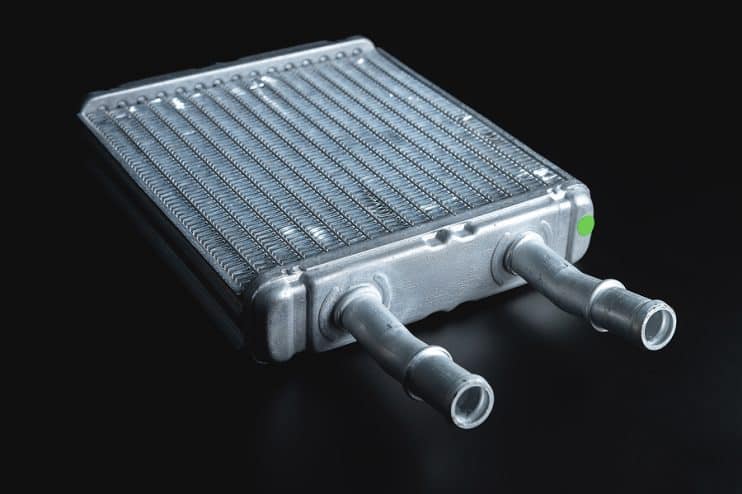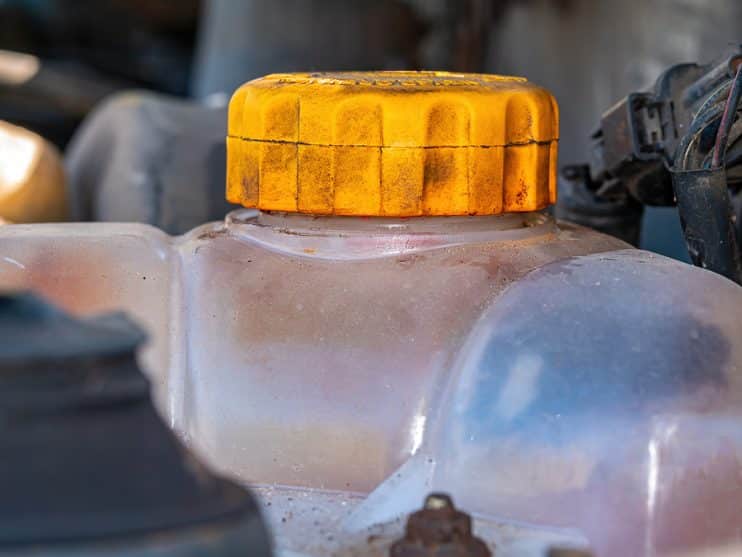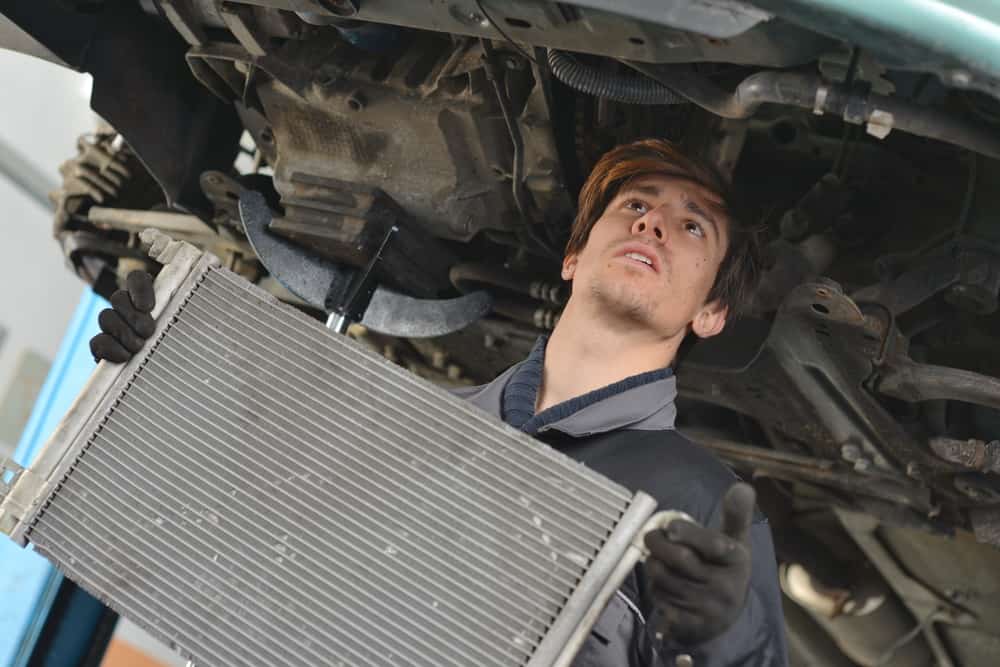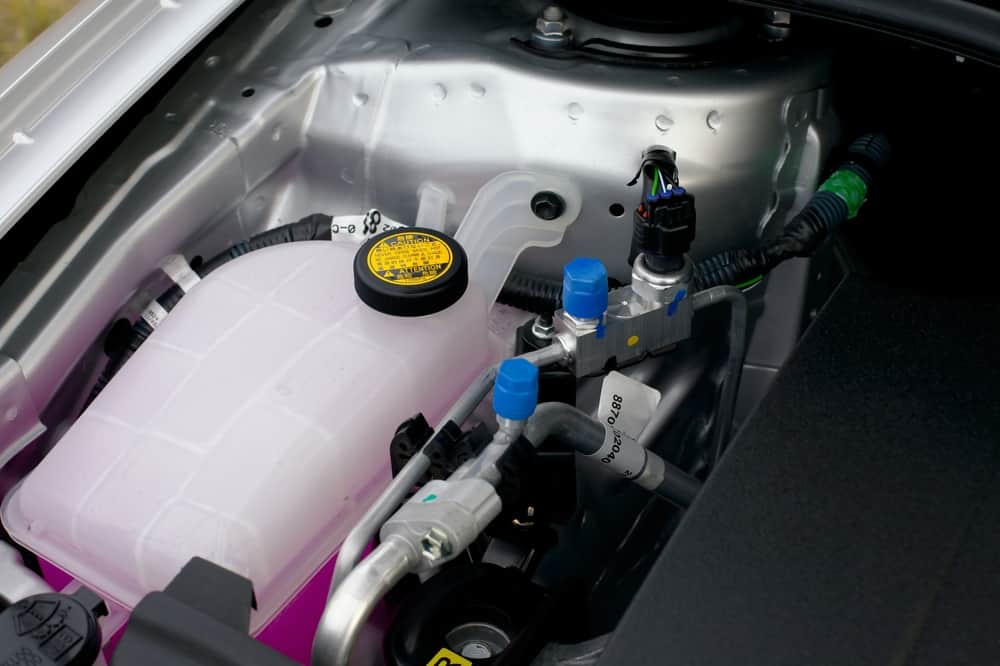
Your vehicle’s heater matrix, also known as a heater core, is a crucial heating and cooling system component. Situated behind the dashboard and connected to the engine’s cooling system through hoses, it transfers heat from the engine to air, which is directed back into your vehicle’s cabin.
The heater matrix keeps your vehicle warm in cold weather and ensures the windows don’t fog up or ice over while you’re on the road, so it plays a vital role in maintaining a comfortable and safe environment.
Table of contents:
- What are the signs that a heater matrix is failing?
- Can you drive with a bad heater core?
- How do I stop my heater matrix from leaking?
- What causes my heater matrix to fail?
- How can I test my heater matrix?
What are the signs that a heater matrix is failing?
Here are some common signs that your heater matrix may need replacing with a new or used heater matrix.
Low coolant levels
One of the telltale signs that your vehicle’s heater matrix might be faulty is the presence of low coolant levels or a noticeable loss of coolant over time. If you need to add coolant to your vehicle’s reservoir frequently, it’s a sign that something is amiss.
When the heater matrix develops a problem, such as a leak, it can result in a loss of coolant, affecting the overall efficiency of the cooling system. It can lead to reduced levels of coolant in the system, which can result in problems with your engine cooling and potential overheating.
Foggy car windows or windshield
If your windows fog up, especially during colder weather, it can be a sign of a faulty heater matrix. When the matrix isn’t functioning correctly, coolant vapour may leak into the cabin, leading to condensation on the windows.
Fog and condensation on your windows aren’t just nuisances; they can severely compromise driving visibility. If you notice persistent fog on the windows despite using your defogger, get it checked out.

Cold cabin despite a hot engine
If your cabin remains cold, even when your car’s engine is running hot, this could be a sign that the heater matrix cannot transfer heat effectively from the engine to the interior.
This could be due to a clog, a leak, or a malfunction in the matrix itself. Regardless of the cause, a cold cabin when the engine is hot affects passenger comfort and can also stop your windscreen and windows from defrosting, leading to reduced visibility.
Overheating engine
When the matrix is malfunctioning, it can disrupt the circulation of coolant through the engine’s cooling system, causing the engine to overheat.
If you notice your engine temperature gauge climbing into the red zone, get it checked out as soon as you can. Ignoring an overheating engine can lead to permanent damage and costly repairs further down the line and is a red flag for safety out on the road.
Unusual smells
If you notice unusual or unpleasant smells inside your car, it could indicate a faulty heater matrix leaking coolant. It might smell sweet and sugary – like syrup or antifreeze. Sometimes, the smell may only be noticeable when the heater is on.
It’s not only unpleasant, but it can also be harmful if inhaled over prolonged periods. If you notice a persistent and unusual smell that you can’t attribute to anything else, it’s essential to have your vehicle’s heating and cooling system inspected by a professional mechanic.
Wet carpets
Wet carpets in your car, particularly on the passenger side, can indicate a coolant leak from a faulty heater matrix. It can seep into the car’s interior and lead to dampness, damaging your vehicle’s flooring, insulation and electrical components.
Ignoring wet carpets or dampness can lead to mould and mildew, which can increase poor air quality inside the cabin and is a health concern, particularly if you drive frequently or for long distances.

Over pressurised coolant system
Coolant flow can be restricted if the matrix is blocked or clogged, leading to increased pressure within the system.
This heightened pressure can result in various issues, such as coolant leaks. It can also stress the components within the cooling system, such as hoses, pipes, seals, gaskets, and even the radiator itself.
Can you drive with a bad heater core?
Technically, you can drive with a bad heater core, but we wouldn’t recommend it. Besides being uncomfortable if it’s cold outside, you’ll struggle with visibility as your windows and windshield fog up.
You also risk your engine overheating, which could cause severe engine damage. If coolant leaks onto other electrical components, you may have to have them replaced too. If you suspect a problem with your heating core, check it out as soon as possible.
How do I stop my heater matrix from leaking?
Start by confirming the leak’s source through signs like wet carpets or a sweet smell inside your vehicle. Once identified, consider using a radiator stop leak product or coolant leak sealant, following the product instructions closely. It’s a good idea to flush your system before you use a sealant, to remove any debris first.
Remember that these solutions are temporary fixes and may not work for more significant leaks. For more severe leaks or if the sealant doesn’t work, get your vehicle checked out by a mechanic.
What causes my heater matrix to fail?
Poor-quality coolant or the wrong coolant can make the heater core corrode faster. If the pressure in the cooling system is too high, it can strain the heater core and cause leaks. This pressure problem might be due to a broken radiator cap or electrical issues.
Damage from a crash and rust can also contribute to leaks. The heater matrix components can also get blocked by dirt or debris, making it less effective and increasing the risk of leaks.
How can I test my heater matrix?
Follow one of these two ways to check if your heater matrix is functioning correctly:
- Use an infrared thermometer to check heat levels in your dash – if the thermometer doesn’t detect heat while your heater is on high, it suggests heater core damage.
If you don’t have an infrared thermometer, test it with your hands:
- Start the engine and turn the heat inside the cabin to the maximum.
- Find the heater core hoses under the dashboard; they should become too hot to hold after a few minutes.
- Your heater core may have issues if the hoses don’t get hot. For example, a cooler outlet hose compared to the inlet hose could indicate a clogged heater core.
- Consider flushing the heater core hoses to fix the clog.
- If the outlet hose remains cooler, the heater core may be damaged and need repair or replacement.









.png)